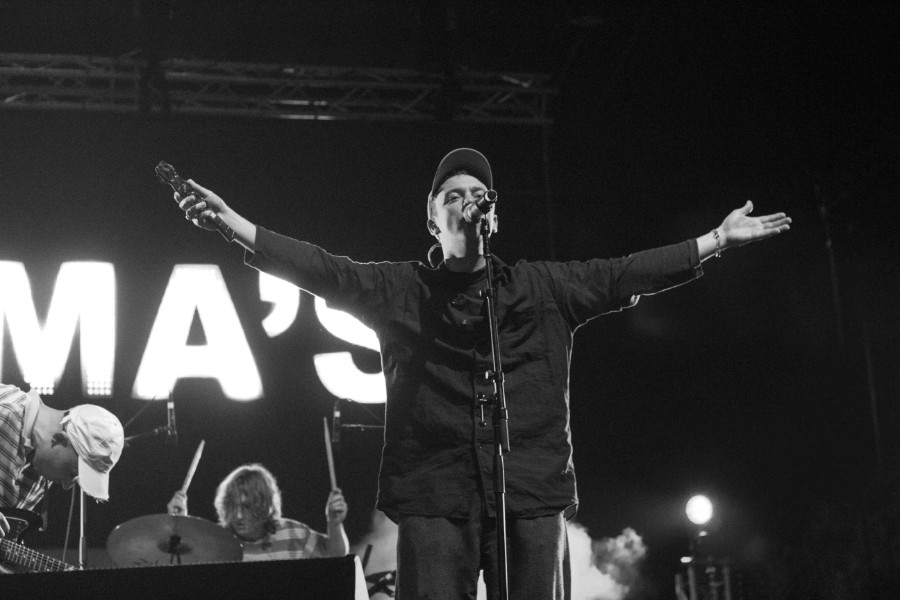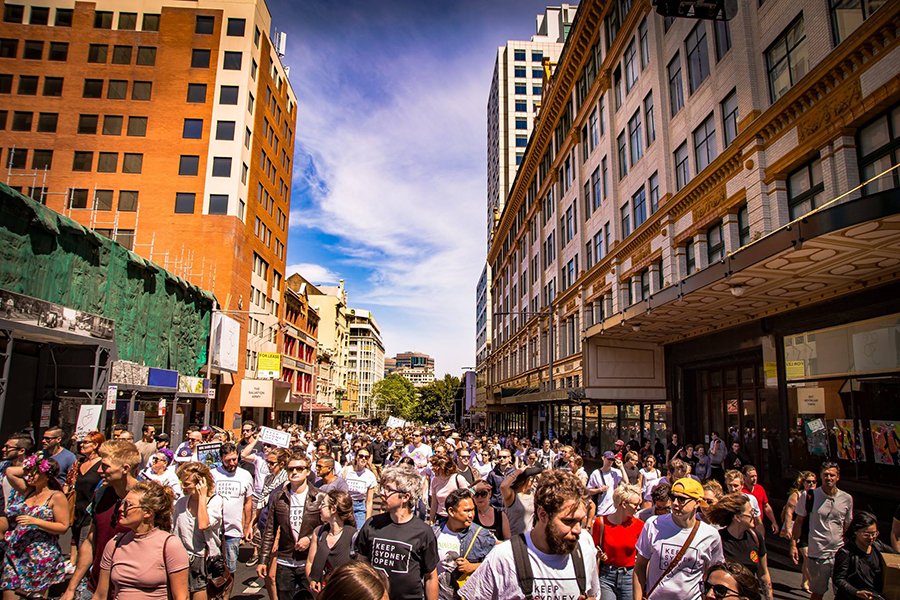When you’re living in a cultural centre, a thriving reference point that the rest of the world aspires to, you know it. Living within such an energy can have a profound effect on a population – it’s why some of the happiest countries on the planet are those that give arts the recognition it deserves. However, the opposite also applies.
It’s been red hot on the topic list for some time now, but funding of the arts in Australia seems to have been taking hit after hit. A casualty of a government seemingly hell bent on ripping up the foundations of a long established arts industry, our musicians, visual artists and actors are being tossed around like ragdolls. It’s unequivocally shitty and no one is benefitting.
I guess we are all pretty inclined to get rowdy about alterations to funding of the music industry, but it is important to remember that with these changes our museums, galleries, arts schools, education programs and scholarships are all feeling the heat.

In the last few years, arts funding and recognition has been hamstringed in Australia. To prove it, we compare our lacking policies to the cultural capitals of the world.
Happy was curious to see how our fair country’s arts funding model stands against those around the world. In doing this, there a few key indicators on comparison:
- Per capita funding figures.
- Arts spending by federal government as a % of GDP.
- Arts spending by federal government as a % of all government spending.
- Comparative income of arts organizations.
Let’s have a look:
Germany
Since the 1970s Germany’s arts sector has been functioning under the federal program for art purchases of contemporary art, supporting artist organisations. The program has an agenda to promote interest in art and develop artist education within its population.
To prove that cultural investment is a significant priority to the German federal government, in spite of a decrease in national budget by 3.1%, arts funding still managed to be increased by 8% in 2013. In 2014 Germany’s national arts budget sat at $1.63 billion USD.
Northern Ireland
For their minuscule population of 1.8 million, Northern Ireland announced in 2014 that $21 million USD would be distributed between overseas artists and organisations, as well as those performing nationally. This is a phenomenal contribution, especially when looking at the figures as a percentage of Northern Ireland’s population.
France
A globally revered cultural and artistic capital of the world, France invests heavily in its cultural industries, providing $4.73 USD billion to its cultural sector, of a total $10 billion national budget.
Sweden
The Swedish Arts Council is responsible for implementing national cultural policy and allocating funding to performing arts, music and literature. Each year the body injects generous amounts to supporting punk and indie bands (a move which American Republicans have ‘shockingly’ criticised).
2011 saw Sweden spend 2.6% of central government funding on culture alone. For its population of 9 million, the Swedish Arts Grants Committee allocates $15 million USD, and in addition the Nordic Culture Fund extends it’s cooperation beyond its own borders and into other Nordic nations, committing to architecture, design, visual art, performing arts, film, literature, music and multilingual projects.
Finland
Finland operated under a funding model which directly supports individual artists through training and cultural schemes. In 2011 the government injected $44.61 million USD into their national arts scheme, with $18.93 million of that spent purely on individual artists.
England
The national body for arts funding distribution in the UK is the Department for Culture Media and Sport (DCMS). In the years 2012 and 2013, DCMS provided $728 million USD to major national museums and galleries.
Mexico
Mexico has been found to offer a tax for amnesty model, whereby since 1957 Mexican artists are offered a deal to sell five artworks per year and consequently be able to offer the government art in lieu of tax payments. The art is displayed in galleries, museums and public buildings and loaned for exhibitions. In 2014, 700 artists were registered under the scheme and the Mexican government has accumulated 8000 works of national art.

Australia
In comparison, The Australian Arts and Culture Fund provides just $12 million over four years, with a maximum grant of $500,000 permitted. When taking into account Australia’s population of 23.13 million, this model doesn’t even come close to those of other nations.
In addition, we are unfortunately seeing a slump in both organisations applying for grants, and grants being offered by the government even after the fact. May 13th 2016 saw, of 147 previously funded organisations, 53 rejected, with some even refusing to resubmit their applications, resulting in 65 Australian Arts faculties without government support.
In an admittedly fragile industry sector, arts are sitting on a precipice fraught with the possibility of utter collapse, a devastating prospect.
It’s also interesting and necessary to address the established lack of structure that exists in determining arts funding within Australia. The decision is formulated by a cohort of 73 peer assessors, undoubtedly experts in their field, cross referencing small to mid-sized organisations with government approved guidelines for applicability for financial support.
However, it seems that even these assessors were in the dark as to where the cutoff for funding lies. A frustrated assessor stated that “what we had to talk about really was the 50 or 60 per cent [of applications] that sat in the middle.”
Does this just go to prove that even the people making the decisions behind these cuts and restrictions, the gate keepers of arts support, are not even being made fully aware to the brevity of their role and are given little to no direction in determining the outcome of such important decisions?

Australia is seemingly way behind the eight ball in both acknowledging and promoting arts industries and organisations, as well as their subsequent influences on education, cultural capital, global relevance and a much simpler but less measurable statistic – public stability, health and happiness.
Since the Abbott Government in 2014 we have already had $204.8 million dollars cut from the arts budget.
We’re not asking for an artistic utopia, we’re simply asking how much it would take to turn the public’s current distaste into something healthier?
Australia has, and always will have the potential to shine brightly as a beacon of culture, with a beaming population to match. The question lies in how much more disillusion can our arts industry withstand, before the cultural integrity and innovation of this country is obliterated to obscurity?
While you’re here, check out our piece on how to promote your band.



